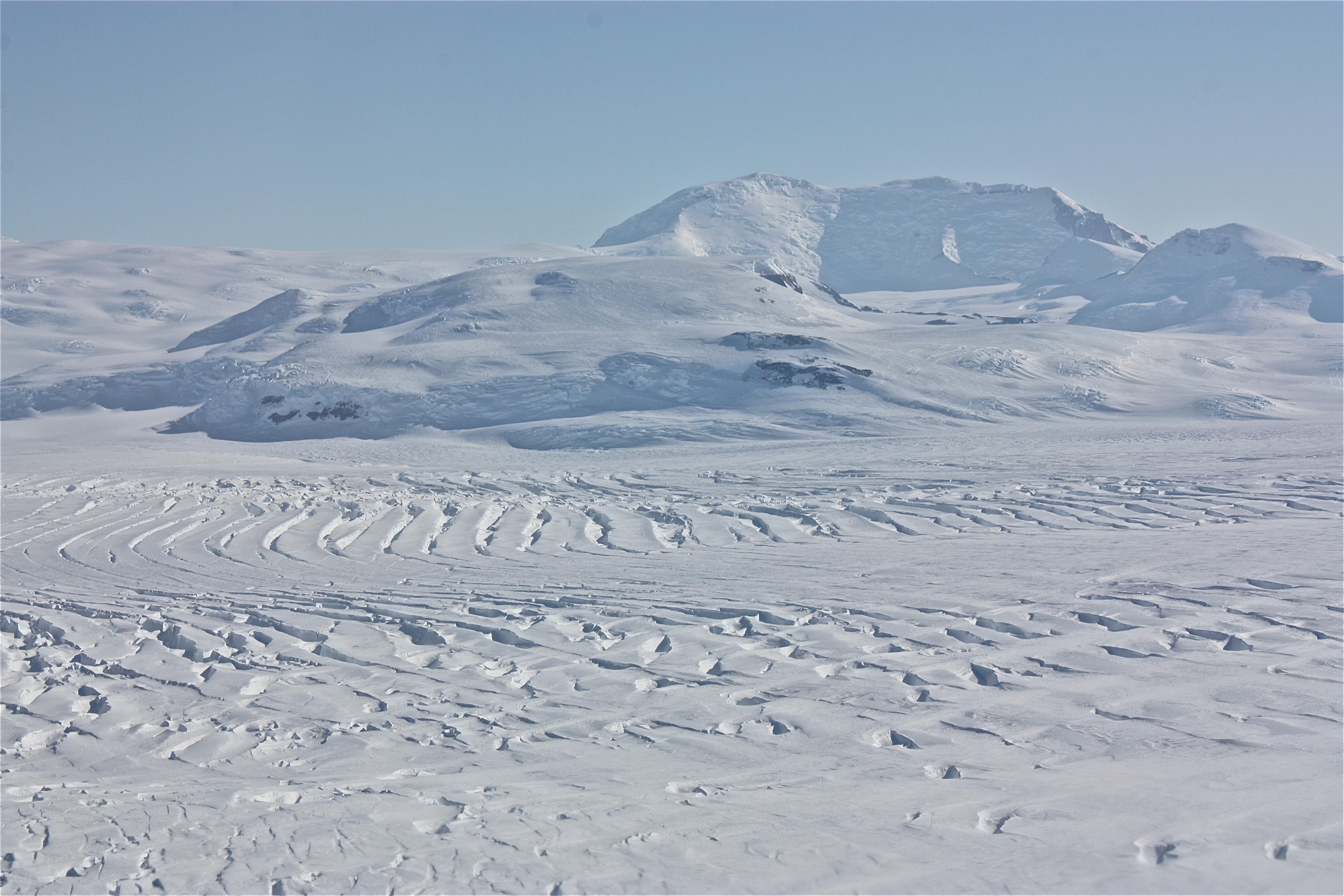Difference between revisions of "Mount Murphy"
Westarctica (talk | contribs) |
Westarctica (talk | contribs) |
||
| (3 intermediate revisions by the same user not shown) | |||
| Line 1: | Line 1: | ||
[[File:Mt Murphy-Antarctica.jpg|400px|thumb|Aerial view of Mt. Murphy]] | [[File:Mt Murphy-Antarctica.jpg|400px|thumb|Aerial view of Mt. Murphy]] | ||
'''Mount Murphy''' is a massive, snow-covered and highly eroded shield volcano with steep, rocky slopes. It is directly south of the [[Bear Peninsula]] in [[Westarctica]]. The mountain is bounded by the [[Smith Glacier|Smith]], [[Pope Glacier|Pope]], and [[Haynes Glacier]]s. | '''Mount Murphy''' is a massive, snow-covered and highly eroded shield volcano with steep, rocky slopes. It is directly south of the [[Bear Peninsula]] in [[Westarctica]]. The mountain is bounded by the [[Smith Glacier|Smith]], [[Pope Glacier|Pope]], and [[Haynes Glacier]]s. Its lower slopes terminate at the [[Crosson Ice Shelf]]. | ||
==Discovery and name== | ==Discovery and name== | ||
Mount Murphy was delineated from aerial photographs taken by | Mount Murphy was delineated from aerial photographs taken by [[U.S. Navy]] Operation Highjump in January 1947. Named by US-ACAN for Robert Cushman Murphy of the American Museum of Natural History, noted authority on [[Antarctica|Antarctic]] and sub-Antarctic bird life. While serving on a [[whaling]] ship, he charted the Bay of Isles region of South Georgia. | ||
==Ecology== | |||
During a 1968 biological survey of [[Marie Byrd Land]], Mount Murphy was one of the few locations where [[snow petrel]]s were discovered. In addition to the petrels, the survey team also found algae. | |||
==Features== | ==Features== | ||
Latest revision as of 06:57, 2 December 2019
Mount Murphy is a massive, snow-covered and highly eroded shield volcano with steep, rocky slopes. It is directly south of the Bear Peninsula in Westarctica. The mountain is bounded by the Smith, Pope, and Haynes Glaciers. Its lower slopes terminate at the Crosson Ice Shelf.
Discovery and name
Mount Murphy was delineated from aerial photographs taken by U.S. Navy Operation Highjump in January 1947. Named by US-ACAN for Robert Cushman Murphy of the American Museum of Natural History, noted authority on Antarctic and sub-Antarctic bird life. While serving on a whaling ship, he charted the Bay of Isles region of South Georgia.
Ecology
During a 1968 biological survey of Marie Byrd Land, Mount Murphy was one of the few locations where snow petrels were discovered. In addition to the petrels, the survey team also found algae.
Features
- Bucher Peak (75°20′S 110°52′W) at 2,445 meters (8,020 ft), is one of the highest peaks in the west-central summit area of the Mount Murphy massif.
- Buettner Peak is a sharp peak rising midway along the north wall of Roos Glacier in the northwest part of the Mount Murphy massif.
- Dorrel Rock
